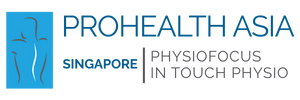Conquer HYROX Singapore: Your Physio-Guided Blueprint for Peak Performance & Injury Prevention
The global fitness race phenomenon, HYROX, is taking Singapore by storm. Combining eight 1km runs with eight functional fitness stations (Sled Push/Pull, Burpees, Wall Balls, etc.), it's the ultimate test of hybrid endurance. But the unique demands of this race - repeatedly switching between running and heavy functional movements - place specific, intense stress on the body.
If you're an athlete in Singapore training for the next HYROX event, your secret weapon isn't just more training volume - it's smart, injury-informed preparation. This is where Physiotherapy in Singapore becomes an indispensable part of your training plan, helping you to not just finish the race, but to perform at your absolute best, safely.
Why the HYROX Challenge Demands a Sports Physiotherapist
HYROX is not just a marathon or a pure strength competition; it's a constant battle between cardiovascular and muscular systems. The most common issues that sideline athletes during their HYROX journey are often linked to the repetitive, high-load movements under fatigue.
Common HYROX Training Pitfalls and Injuries:
Running (8 x 1km):
High-Risk Areas: Lower Back, Shoulders, Knees
Common Injuries: Runner's Knee, Achilles Tendinopathy, Shin Splints
Sled Push/Pull:
High-Risk Areas: Knees, Ankles, Shins, Hips
Common Injuries: Lumbar Strain, Patellofemoral Pain, Rotator Cuff Irritation
Wall Balls:
High-Risk Areas: Shoulders, Lower Back, Knees
Common Injuries: Shoulder Impingement, Back Pain, Patellar Tendinopathy
Sandbag Lunges:
High-Risk Areas: Knees, Glutes, Hips
Common Injuries: Knee Pain, Hip Flexor Tightness, Gluteal Tendinopathy
A dedicated Sports Physiotherapy Singapore expert understands this specific race profile. Their role is to transform your training from a high-risk activity into a structured, progressive path to peak performance.
Your Physiotherapy Blueprint for HYROX Success
A proactive physiotherapy approach is the ultimate HYROX Injury Prevention strategy. Don't wait until you're injured—integrate these steps into your HYROX Training Singapore plan now.
1. Pre-Race HYROX Assessment Program
Before you ramp up your volume, a comprehensive assessment identifies your specific weak links.
Running Assessment: Analyze your running form and biomechanics, especially under fatigue. An inefficient running stride repeated 8 times is a massive energy drain and a prime source of injury.
Movement Screening: Evaluate your squat, lunge, push, and pull patterns. The goal is to ensure optimal movement efficiency for stations like the Sled Push and Wall Balls, preventing wear-and-tear.
Strength & Mobility Check: Pinpoint any muscular imbalances. For example, addressing a weak core or stiff hips before the Sandbag Lunges can save your lower back on race day.
2. Load Management & Technique Refinement
Physiotherapists work with your coach (or independently) to ensure your training volume increases gradually and sustainably.
Avoid "Too Much, Too Soon": A physio guides the progression of your load to allow tendons and muscles time to adapt, reducing the risk of overuse injuries.
Technique Coaching: Receive specific feedback on functional movements. For the Sled Push, is your force generation coming from your legs or are you over-relying on your lower back? For the Wall Balls, is your shoulder position safe and efficient?
3. Optimising Transition and Power
The key to HYROX speed is the ability to rapidly shift from a cardio-dominant state (running) to a strength-dominant state (stations) without losing form.
Specific Prehab Exercises: Your physio will prescribe targeted exercises to improve stability and power in key transition areas, such as single-leg balance drills and rotational core strength, helping you maintain form when the fatigue hits.
The Vital Role of Recovery: Post-Training Physio
In the intense training blocks for HYROX, recovery is non-negotiable. It's the period when your body repairs and adapts.
Soft Tissue Therapy: Modalities like sports massage, dry needling, or cupping can help manage the accumulated muscle soreness and tension from high-volume training.
Addressing the "Niggles": Don't ignore that persistent ache in your knee or shoulder. A physiotherapy consultation in Singapore can treat these minor issues before they escalate into race-stopping injuries, ensuring you stay in the game.
Individualised Recovery Plan: A physio helps you determine the right balance of active recovery, stretching, and targeted rest based on your specific training load and physical response.

